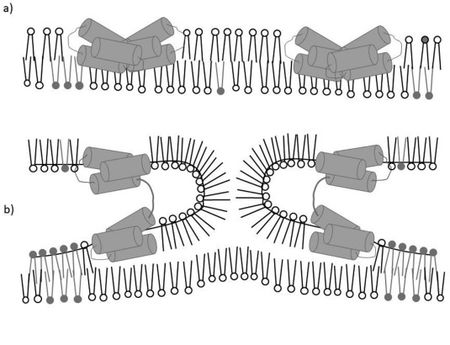Researchers from the JU Faculty of Chemistry have recently published the paper “The lung surfactant activity probed with molecular dynamics simulations” in Advances in Colloid and Interface Science journal. The article summarises the results of long-term research on lung surfactant conducted by the JU scientists.
The studies whose results are discussed in the paper have been carried out by research groups of Thermodynamics and Chemical Reaction Dynamics (Dr Anna Stachowicz-Kuśnierz, Prof. Jacek Korchowiec) and of Surface Science (Prof. Beata Korchowiec’s team). Part of the research was conducted in collaboration with partners from the University of Lorraine (Prof. Ewa Rogalska). Models of lung surfactant were studied theoretically using a molecular dynamics simulator and experimentally my means of Langmuir technique.
Lung surfactant is a multicomponent mixture of lipids and proteins covering the inside surface of pulmonary alveoli. During tidal breathing its monolayer is also subject to dynamic changes, such as expansion/compression, exchange of lipids with the reservoir, etc. Gas exchange (O2/CO2) occurring through the interphase surface can be disrupted by foreign substances present in the atmosphere. The article discusses how the presence of polycyclic aromatic hydrocarbons (e.g. benzo[a]pyrene), dioxins, and oxidizing factors (ozone) disrupts the functioning of lung surfactants. These chemical compounds change the course of phase transitions, leading to various diseases. The understanding of processes going on in the lung surfactant is crucial in precenting respiratory failure and producing synthetic substitutes of the lung surfactant.















